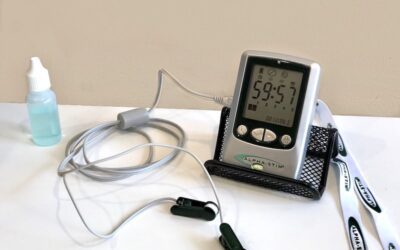When Deletion Is a Violation and Amendment Is Your Duty: The Panic Behind the “Delete” Button
Every clinician who has used an Electronic Medical Record (EMR) knows the feeling. It is the moment of cold panic that follows seeing a significant error—a typo, a factual inaccuracy, or worse, information about the wrong client—in a progress note that has already been signed. Your first instinct is to “delete” it, to make it disappear. But when you try, the system flashes a stark warning: “YOU CANNOT DELETE A SIGNED NOTE”.
This technical roadblock is the frontline of a complex legal and ethical framework. The user’s panic is understandable, and their central question is one all responsible practitioners ask: “But what if I have to get rid of it? What if leaving it there is the bigger violation?”
This article is the definitive guide to navigating this exact problem. It will replace the clinician’s fear of the “delete” button with a professional’s understanding of its purpose. The core principle of medical record integrity is not about erasing mistakes; it is about correcting them with transparency. This guide will demonstrate how to move from a place of panic to a place of professional fidelity by replacing the fraught concept of “deleting” with the legally correct and defensible actions of amending, correcting, and retracting.
The Legal and Technical Framework: Why Your EMR Won’t Let You “Delete”
Your EMR’s refusal to delete a note is not a design flaw; it is a critical safety feature mandated by a web of interconnected laws and technical standards. Understanding why the system stops you is the first step to using it correctly.
The Law of the Land: HIPAA and the “Right to Amend”
The primary governing law is the Health Insurance Portability and Accountability Act (HIPAA) Privacy Rule. Specifically, grants patients the legal right to request an amendment to their Protected Health Information (PHI) held within the “designated record set”.
This right, however, is not absolute. It is a right to request, not to demand. The law establishes a formal procedure:
- Patient Request: The patient must typically make the request in writing.
- Provider Response: The provider has 60 days to act on the request, with a possible 30-day extension.
- Acceptance or Denial: The provider must review the request. If the provider determines the original information is “accurate and complete,” they can—and often should—deny the request. The provider then notifies the patient of the acceptance or denial in writing.
The EMR’s “no-delete” function is the first line of defense in maintaining this legal process. It prevents a clinician from unilaterally changing a record in a way that bypasses the patient’s formal rights or, conversely, from being pressured by a patient to erase an accurate diagnosis.
The EMR’s “Digital Footprint”: The Audit Trail
The second reason you cannot delete a note is technical. The HIPAA Security Rule, along with certification requirements for EMRs, mandates the use of robust audit trails.
An audit trail is a set of metadata logs that tracks every single interaction with a patient’s record. It records:
- Who accessed the record (user ID).
- When they accessed it (date and timestamp).
- From where they accessed it (IP address or workstation).
- What they did (e.g., view, create, print, copy, or attempt to delete).
This audit trail is your practice’s permanent, verifiable history. In a legal context, it is either your best friend or your worst enemy. It can be used to prove that you followed correct protocol when making a correction or expose a fraudulent attempt to cover up an error, as the trail can show what was changed and when.
This is why the “delete” button in a certified EMR is often a misnomer. It does not erase the data. Instead, it logs an event in the audit trail—such as “user [X] deleted note on [date]”—while sequestering the original note. True, permanent deletion is often impossible at the user level, and this is by design.
The Legal Nightmare: Spoliation of Evidence
The third and most serious reason you cannot delete notes is the legal doctrine of spoliation of evidence. Spoliation is defined as the “destruction or significant alteration of evidence… for… pending or future litigation”.
If a therapist learns of a patient complaint, a board investigation, or a subpoena, and then goes into the EMR to “clean up” the records, they have committed spoliation. The intent does not even have to be malicious; simply altering records in anticipation of litigation can be enough.
The consequences are severe. A court can issue sanctions ranging from fines to an “adverse inference instruction,” where the jury is told to assume the destroyed evidence was harmful to your case. In the most extreme cases, like the medical malpractice suit Keene v. Brigham and Women’s Hospital, the hospital’s failure to produce all of the patient’s medical records led to a default sanction on the issue of liability. This means they lost the case on the spot, without any opportunity to present a defense, simply because their records were compromised.
Your EMR’s audit trail and its refusal to allow simple deletion are technical safeguards designed to protect you and your organization from precisely this kind of catastrophic legal outcome.
The Most Important Distinction: Progress Notes vs. Psychotherapy Notes
No therapist can safely navigate documentation errors without understanding the fundamental, HIPAA-defined difference between Progress Notes and Psychotherapy Notes. Mistaking one for the other—and documenting in the wrong place—is the root cause of many of the most high-risk documentation errors.
Progress Notes (The “Official” Medical Record)
- What They Are: These notes are part of the patient’s “designated record set”. They document the “who, what, when, where” of treatment.
- Contents: HIPAA is clear on what they contain (and what they are not). They include medication prescription and monitoring, session start and stop times, modalities, diagnosis, functional status, the treatment plan, symptoms, prognosis, and progress to date.
- Access: Patients have a right to access and request amendments to these notes. They can be(https://www.upheal.io/documentation/psychotherapy-notes-vs-progress-notes) without a special, separate authorization. This is the note you use for billing and care coordination.
Psychotherapy Notes (The Therapist’s “Private” Notes)
- What They Are: HIPAA defines these as “notes recorded… documenting or analyzing the contents of a conversation”. They are for the therapist’s personal use only.
- HIPAA Mandate: They must be kept “separate from the rest of the patient’s medical record”. Storing them in the same place as progress notes effectively waives their protection.
- Contents: These notes contain your raw thoughts, hypotheses, analyses of transference, and personal reflections. They specifically exclude all the elements of a progress note (diagnosis, plan, meds, etc.).
- Access: Psychotherapy notes receive special, heightened protection. Patients do not have a right of access to them. Releasing them for any reason—even to another treating provider or for TPO—requires a specific, separate patient authorization.
This legal separation is a gift to therapists. The law provides a legally protected space (your psychotherapy notes) for you to think freely and process your clinical work, as long as you keep your “official” record (the progress note) objective, factual, and focused on the billable elements of care. Many of the “delete-panic” scenarios arise from therapists documenting subjective, sensitive “psychotherapy note” content in the “progress note” section, thereby making it part of the official record and forfeiting all special protections.
The Clinical Correction Playbook: How to Fix Errors the Right Way
Now that the “why” is clear, here is the “how.” The correct response to an error is never “deletion.” It is one of the “Three R’s.”
The “Three R’s” of Record Correction: Amendment, Addendum, and Retraction
- Amendment/Correction: This is the standard process for fixing a factual error that is caught relatively early. In the days of paper records, this was a single strikethrough that left the original text legible, with the correction initialed and dated nearby. In a modern EMR, this is the “amend” function. When used, the EMR typically locks the original note, creates a new, editable copy, and transparently links the two, showing that one is an amendment of the other.
- Addendum/Late Entry: This is the protocol for adding new or omitted information to a note that is already signed and locked. You do not change the old note. You create a new note, clearly label it “Addendum” or “Late Entry,” and critically, reference the date of the original note it pertains to. This new note is then signed with the current date. This is the correct method for documenting information that was forgotten or for clarifying vague or inappropriate language from a previous entry.
- Retraction/Void: This is the “nuclear option” and the one that most closely aligns with the user’s “delete” query. A retraction is a formal process to remove a note from view because it is fundamentally invalid—the most common reason being it was entered on the wrong patient’s chart. This is not a simple user-level delete. It is an administrative function where the EMR suppresses the note, but the audit trail documents the retraction. This almost always requires contacting your practice administrator, privacy officer, or EMR support team.
The Documentation Correction Protocol
This table provides a scannable summary of the correct action to take for the most common documentation errors.
| Type of Error | Protocol to Use | Key Action / EMR Function | Legal/Ethical Principle |
| Simple typo, wrong word, or factual error in a signed note (e.g., “stated ‘anxious'” but meant “stated ‘excited'”). | Amendment (if within EMR window) or Addendum (if window is closed). | Use the EMR’s “amend” function. If locked, write a new note labeled “Addendum,” reference the original note’s date, and state the correction. | Integrity. The record must be accurate. The change must be transparent and auditable. |
| Forgot significant information (e.g., failed to document a risk assessment). | Late Entry or Addendum | Write a new note. Title it “Late Entry” or “Addendum”. Document the omitted information.(https://theraplan.com/amending-medical-documentation-whats-appropriate/). | Completeness. “If it wasn’t written down, it didn’t happen”. This closes a clinical and legal gap. |
| CRITICAL ERROR: Note entered on the wrong patient’s chart. | Retraction / Void / Deletion | IMMEDIATELY contact your administrator, privacy officer, or EMR support. This requires admin privileges to “retract” or “void” the note. Do not copy-paste it to the correct chart. | Patient Safety & Privacy. This is a HIPAA breach. The goal is to remove the incorrect PHI from the wrong chart. The breach must be reported. |
| Patient requests a change you disagree with (e.g., “Delete my diagnosis”). | Patient’s Right to Amend Process | (https://www.ecfr.gov/current/title-45/subtitle-A/subchapter-C/part-164/subpart-E/section-164.526) within 60 days. Offer the patient the right to submit a “Statement of Disagreement,” which you must then append to the record. | HIPAA 45 CFR § 164.526. You are not required to amend a record you believe is accurate and complete. |
| Wrote subjective/judgmental language (e.g., “client was dramatic”). | Addendum | Write a new note labeled “Addendum.” Clarify the subjective term with objective behaviors (e.g., “Addendum to: The term ‘dramatic’ was non-clinical. Objective observations were: client spoke in a raised voice, cried…”). | Professionalism & Objectivity. This corrects the record for legal defensibility and quality of care. |
The Hypotheticals: 20 Scenarios and Their Solutions
This section addresses the practical “what if” scenarios that cause clinicians the most distress.
Group 1: The “Wrong Chart” Catastrophe
The Big One: You pasted Client A’s entire progress note into Client B’s chart and signed it.
- Solution: This is the most serious error. Stop immediately. Do not try to edit or delete it yourself.
- Contact your practice owner, supervisor, or designated Privacy Officer immediately. This is a confirmed HIPAA breach.
- Request that the note be retracted. This is a high-level administrative function. The EMR support team or an administrator must go in and “void” or “retract” the note to remove it from view in Client B’s chart.
- Understand that the note is not permanently erased. The audit trail will show the note was created, who viewed it, and who retracted it.
- Re-document the note from scratch in Client A’s chart. Do not copy-paste again.
- Follow your organization’s Breach Notification protocol. This is a reportable incident.
You realize this after Client B has requested and received their records.
- Solution: This is now a confirmed and reported HIPAA breach. The protocol is the same as the first scenario, but you must now also follow the(https://www.hhs.gov/hipaa/for-professionals/breach-notification/index.html). This includes conducting a risk assessment and formally notifying Client A (whose privacy was breached) and Client B (who received another’s PHI). This may also require(https://www.google.com/search?q=https.www.hipaajournal.com/accidental-hipaa-violation/).
You wrote one sentence about Client A in Client B’s note (a “co-mingling” error).
- Solution: This is still a HIPAA violation. The cleanest solution is to follow the protocol in the first scenario: request a full retraction of the entire note. You can then re-write the note for Client B without Client A’s information. Some systems may not allow the removal of just one sentence, requiring the entire document to be retracted and a corrected copy created. This still constitutes a breach that must be assessed.
Group 2: The Client Disagrees
A client demands you delete their diagnosis (e.g., BPD, GAD) because they “don’t agree with it.”
- Solution: You cannot and should not delete an accurate diagnosis. Explain that diagnoses are your clinical, professional judgment and part of the accurate record. Then, explain their(https://www.thedoctors.com/articles/requests-to-amend-a-medical-or-dental-record/). If they submit a formal written request, you can formally deny it on the grounds that the record is “accurate and complete”. You must then offer them the right to file a Statement of Disagreement.
The client submits a 10-page “Statement of Disagreement.” What do you do?
- Solution: You must accept it. Per(https.www.law.cornell.edu/cfr/text/45/164.526), you must “append or otherwise link” their statement to the designated record set. In an EMR, this usually means scanning and uploading the document and linking it to the disputed note. You also have the right to write a rebuttal statement, which must also be attached.
A client says, “I never said that,” and asks you to change a direct quote in your note.
- Solution: This is a judgment call. If you believe you misheard or mistyped, you should absolutely correct it using an Amendment or Addendum. (e.g., “Addendum: Client clarifies that in the session on, they stated ‘I feel lost,’ not ‘I feel hopeless.'”). If you are certain your quote is accurate, you treat it like the “Delete my diagnosis” scenario: explain that it is part of the accurate record and(https://www.google.com/search?q=https.www.reddit.com/r/therapists/comments/1j80v03/client_requesting_i_change_their_progress_notes/).
A client in a custody battle asks you to “clean up” the records to “make them look better.”
- Solution: This is an absolute ethical and legal “No.” Explain that this would be altering a legal document and could be considered spoliation of evidence. It exposes you to license loss and legal sanctions. You can offer to write a new treatment summary that contextualizes their progress, but you will not, under any circumstances, alter existing, accurate notes.
Group 3: The “Oops, I Wrote That”
You wrote a subjective, non-clinical judgment (e.g., “client was needlessly dramatic” or “dressed seductively”).
- Solution: This is a major error in professional documentation. It is biased and not clinically defensible. Immediately (do not wait) write an Addendum. Do not repeat the error. Write: “Addendum to note of: The note contains subjective, non-clinical language. The objective behaviors observed were [e.g., ‘client cried intermittently and spoke in a raised voice while describing their partner’s actions’]. The clinical assessment is [e.g., ‘client was experiencing an acute emotional response consistent with…’].”.
You used the “copy forward” or “cloning” feature, and it brought in old, inaccurate information (e.g., an old medication list or wrong Vitals).
- Solution: This is a common and extremely dangerous EMR error. It creates a direct patient safety risk. You must create an Addendum to correct the record immediately. “Addendum to note of: The section on [Medications/Vitals] was carried forward in error from a previous note and is inaccurate. The correct information for this date of service is [list correct info].”
You wrote a note that is just vague and lazy (e.g., “Talked about anxiety. Continue plan.” or “Client is stable.”).
- Solution: This is a low-quality note and a major risk in an insurance audit, but it is not a factual error that needs “correction.” You cannot write an addendum that says, “My previous note was bad.” This is a “lesson learned.” You could write a Late Entry if you have a clear memory of the session and it is done very soon after (e.g., “Late Entry for: Adding detail to progress note. Client reported… Interventions included…”). Be careful, as this can look self-serving if done long after the fact.
You find a simple typo (e.g., “mesentiric” instead of “mesenteric”).
- Solution: This is a minor error. If your EMR’s amendment window is still open, you can fix it. If the note is locked, this is generally not considered clinically significant enough to warrant a full, separate addendum, but you can create one if you feel it’s clinically relevant.
Group 4: The Psychotherapy (Private) Note Scenarios
You accidentally saved your psychotherapy note in the general chart (the “progress note” section).
- Solution: This is a critical error. You have just waived the special protections for those notes. Treat this as a “wrong patient” error (Scenario #1). The “wrong patient” is the designated medical record. Immediately contact your administrator to have the note retracted. This must be hidden from view. Then, re-create the note in the correct, separate psychotherapy notes section.
A client requests access to their psychotherapy notes.
- Solution: You can (and in most cases, should) deny this request. HIPAA explicitly excludes psychotherapy notes from the patient’s right of access. You can explain to the client that these are your personal notes for your own use and are not part of their medical record. You can offer to talk about the themes you are tracking, but do not give them the notes.
A client requests you delete your private psychotherapy notes.
- Solution: You can deny this. These are your personal notes. They are not part of the patient’s record, and therefore the “Right to Amend” does not apply to them. In fact, HIPAA allows you to deny access if you believe it could harm the client.
You are leaving a practice. What happens to your psychotherapy notes?
- Solution: This depends on your employment contract. However, unlike the official progress notes (which are the property of the practice and must be retained), psychotherapy notes are your personal work product. In most cases, you either take them with you or, more commonly, securely destroy them. This is one of the only instances where “deletion” is the correct and appropriate action.
You receive a subpoena for “all records.” Do you include your psychotherapy notes?
- Solution: No. A standard subpoena is for the medical record (the progress notes). Psychotherapy notes have heightened protection and generally require a specific, separate court order (which is much harder to get than a subpoena) or a specific patient authorization to be released. Releasing them in response to a simple subpoena is a HIPAA violation.
Group 5: The “Technical Error” Scenarios
You wrote the wrong date of service or CPT (billing) code on a signed note.
- Solution: This is a critical error for billing and reimbursement. You must correct this. Use the Amendment or Addendum process to clarify the correct date and code. “Addendum to note dated [wrong date]: This note’s content reflects the date of service [correct date] and the service provided was.” This is vital for avoiding insurance fraud allegations.
You forgot to sign a note, and the EMR locked it after 24 hours.
- Solution: This happens often. You cannot sign the old, unsigned note. Instead, you must create a Late Entry. The new note should state: “Late Entry for: [Content of the note].” You then sign this new entry with the current date and time. It is now a valid, signed part of the record.
The EMR was down, so you wrote a paper note. How do you add it?
- Solution: Scan the handwritten note. Upload it to the EMR. Create a new digital Late Entry for that date of service and write: “EMR was unavailable. See scanned handwritten note for this date of service, uploaded on [current date].” This creates a digital pointer to the paper record and maintains the timeline.
An EMR glitch deletes a medication from your note or duplicates a paragraph.
- Solution: This is a technical failure. First, contact your EMR vendor’s support. Then, document the fix with an Addendum. “Addendum to note of: A(https://pmc.ncbi.nlm.nih.gov/articles/PMC7284300/) on erroneously [deleted the medication X / duplicated a paragraph]. This addendum serves to confirm the correct and complete note.”
From Fear to Fidelity
The goal of clinical documentation is not “perfection” on the first try. The goal is integrity and transparency.
An error that is ignored, hidden, or illicitly “deleted” is a ticking time bomb—a legal liability and a patient safety risk. In contrast, an error that is caught, owned, and corrected via a transparent, auditable protocol—like an Addendum, Amendment, or Retraction—is the mark of a competent, ethical, and legally defensible professional.
Your EMR’s warnings are not there to punish you; they are there to protect you. They are a shield, not a sword. They guard you against spoliation claims, HIPAA violations, and patient safety disasters by forcing you to use the legally-sound pathway. By replacing the panic of “delete” with the professional confidence of “amend,” “addend,” and “retract,” you move from a place of risk to a place of profound professional responsibility.



























0 Comments